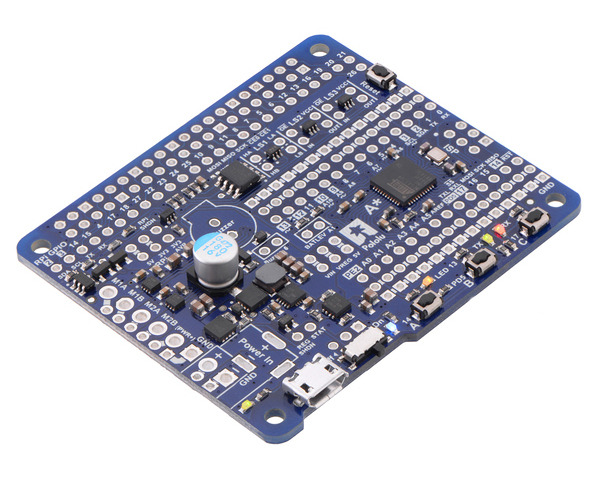Electronics » Development Boards (Programmable Controllers) » Robot Controllers »
A-Star 32U4 Robot Controller LV with Raspberry Pi Bridge (SMT Components Only)
This programmable module is designed to be the core of a small robot, either as an auxiliary controller atop a Raspberry Pi base or as a complete control solution on its own. Its ATmega32U4 AVR microcontroller comes preloaded with an Arduino-compatible bootloader. On-board hardware includes dual motor drivers that can deliver 1.8 A per channel and an efficient voltage regulator that allows the controller to work with a 2.7 V to 11 V input voltage, along with level shifters that enable it to interface with a Raspberry Pi. This version (item #3116) does not include any through-hole components or connectors, allowing for customized assembly or standalone use.
 Compare all products in Robot Controllers or
Compare all products in Robot Controllers or  Raspberry Pi Expansion Boards or
Raspberry Pi Expansion Boards or  A-Star 32U4 Robot Controller.
A-Star 32U4 Robot Controller.
| Description | Specs (19) | Pictures (12) | Resources (22) | FAQs (0) | On the blog (3) | Distributors (2) |
|---|
Dimensions
| Size: | 65 mm × 56 mm |
|---|---|
| Weight: | 14 g |
General specifications
| Processor: | ATmega32U4 @ 16 MHz |
|---|---|
| RAM size: | 2560 bytes |
| Program memory size: | 32 Kbytes1 |
| Motor driver: | DRV8838 |
| Motor channels: | 2 |
| User I/O lines: | 262 |
| Input voltage range: | 2.7 V to 11 V |
| Minimum operating voltage: | 2.7 V |
| Maximum operating voltage: | 11 V |
| Maximum output current: | 1.5 A3 |
| Continuous output current per channel: | 1.8 A |
| Peak output current per channel: | 1.8 A |
| Logic voltage: | 5 V |
| Reverse voltage protection?: | Y |
| External programmer required?: | N |
Identifying markings
| PCB dev codes: | ac04b |
|---|---|
| Other PCB markings: | 0J8907 |
Notes:
- 1
- Note that 4 KB of the MCU's 32 KB of flash memory is used by the pre-installed USB bootloader. All 32 KB is available when programming via the ISP header rather than the bootloader.
- 2
- Some I/O lines are used by on-board hardware.
- 3
- Available current depends on input voltage, current consumed by the board, ambient conditions, and regulator topology. See product documentation and performance graphs for details.










































